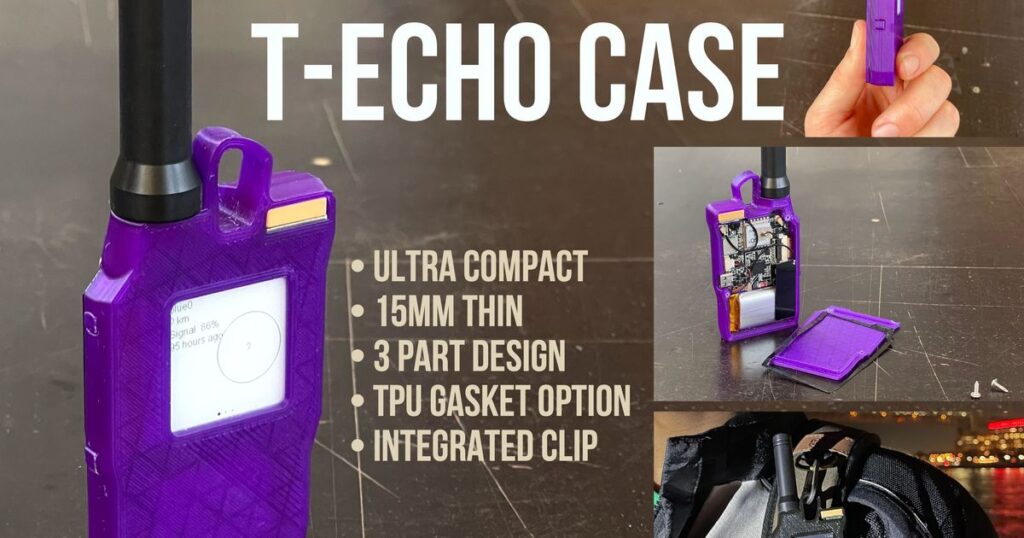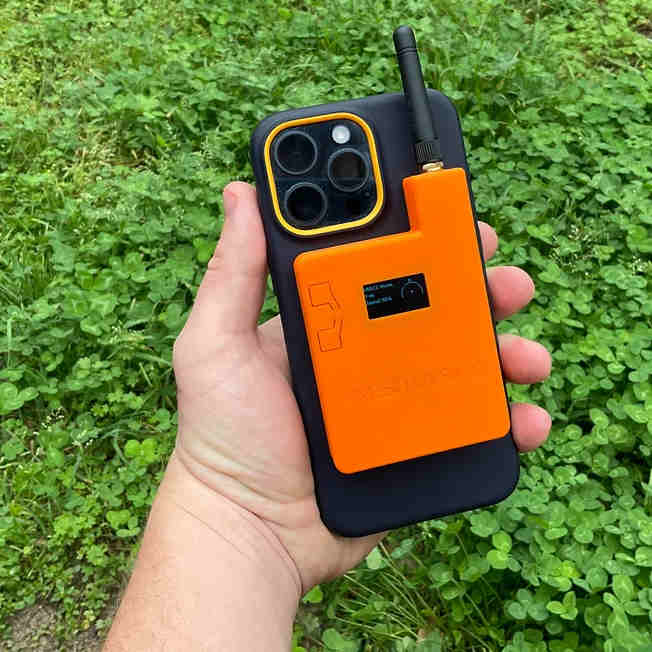Off-Grid Communication with Modern Portable Hardware
In an increasingly connected world, the need for reliable, secure, and off-grid communication has never been more critical. This article explores the top hardware options for Meshtastic and their practical applications, while also providing a basic setup guide.
What is Meshtastic?
Meshtastic is an open-source firmware that enables long-range, encrypted communication using affordable LoRa (Long Range) radio devices. It creates a decentralized wireless mesh network, allowing users to send text messages, GPS coordinates, and other data without relying on traditional cellular or internet infrastructure.
Meshtactic devices can be purchased as plug-and-play kits, where you only need to connect to a mobile device/smartphone/tablet through Bluetooth or USB and you are finished. Other Meshtastic devices may need you to install your own battery. The custom builds often have free 3D printed files available online. If you dont have a 3D printer, you can get a 3D print mailed to you by a cheap service online. Some Meshtastic devices even have mini keyboards and a mini screen built in and don’t need a smartphone. There is allot of flexibility in how to use.
Top Hardware Devices for Meshtastic
- LILYGO® TTGO T-Beam
- Features built-in GPS
- Long battery life
- Ideal for outdoor use and location tracking
- Heltec WiFi LoRa 32 V3
- Compact design
- OLED display for easy status monitoring
- Suitable for portable applications
- RAK4631 WisBlock Core
- Modular design for customization
- Low power consumption
- Excellent for IoT projects and sensor networks
- LilyGO T-Echo
- E-paper display for low power consumption
- NRF52840 chip for improved efficiency
- Perfect for long-term deployments
This is not an extensive list of devices. There are more high quality solutions that can be obtained. Some of them with 200 mile ranges!
Practical Applications of Meshtastic Devices
- Disaster Response and Emergency Communication
- Coordinate rescue efforts when cellular networks are down
- Share critical information during natural disasters
- Remote Expedition Communication
- Stay connected with team members in areas without cell coverage
- Share location data for safety and coordination
- Community Networks
- Create local communication networks in rural areas
- Establish neighborhood watch systems
- Agriculture and Wildlife Monitoring
- Track livestock movements across large ranches
- Monitor wildlife in remote areas without disturbing their habitats
- Industrial Site Communication
- Maintain contact in large facilities with poor cellular coverage
- Coordinate operations in mining or construction sites
Frequency Considerations
The choice of frequency for Meshtastic devices can significantly impact performance based on environmental and geographical conditions:
2.4GHz (North America)
- Advantages: generally low global frequency regulation, higher bandwidth, shorter range if you dont want your signal easily located
- Disadvantages: More crowded spectrum in urban areas
- Best for: General use in North America, mix of urban and rural environments
915 MHz (North America)
- Advantages: Good balance of range and penetration
- Best for: General use in North America, mix of urban and rural environments
868 MHz (Europe)
- Advantages: Less crowded spectrum, good for urban use
- Best for: European users, urban environments
433 MHz (Worldwide)
- Advantages: Excellent penetration through obstacles, longer range
- Disadvantages: Lower data rate, larger antennas required
- Best for: Dense forests, hilly terrain, or applications requiring maximum range
Quick Setup Guide
- Choose Your Hardware: Select a compatible device from the list above or your own compatible device.
- Install Firmware:
- Download the latest Meshtastic firmware for your device
- Use the Web Flasher tool at meshtastic.org to flash the firmware
- Initial Configuration:
- Download the Meshtastic app on your smartphone
- Power on your device and connect it to the app via Bluetooth
- Set your channel name and encryption key
- Network Setup:
- Ensure all devices use the same channel name and encryption key
- Place devices within range of each other to form the mesh network
- Test Communication:
- Send test messages between devices to verify connectivity
- Check GPS functionality if applicable
Battery-Powered Relay Stations
To extend the range of your Meshtastic network, consider setting up battery-powered relay stations:
- Use devices with large battery capacity or solar charging capabilities
- Place relay stations in elevated locations for better coverage
- Configure devices to operate in low-power mode to extend battery life
- Regularly check and maintain relay stations to ensure network reliability
Happy Meshing!
Meshtastic offers a versatile, secure, and affordable solution for off-grid communication. By choosing the right hardware and understanding the implications of different frequencies, users can create robust mesh networks for a wide range of applications. Whether for emergency preparedness, remote expeditions, or community projects, Meshtastic provides a powerful tool for staying connected in challenging environments.
Here are some resources that may cover this topic in more depth:
https://wiki.seeedstudio.com/meshtastic_introduction/
https://meshtastic.org/docs/getting-started/
https://hackaday.com/2023/06/26/meshtastic-for-the-greater-good/
https://www.addielamarr.com/you-need-meshtastic-in-your-bug-out-bag-a-veterans-perspective-on-emergency-communication/
https://meshtastic.org/docs/overview/radio-settings/
https://pileupdx.com/2024/07/31/getting-jump-started-with-meshtastic/
https://meshtastic.letstalkthis.com
https://www.reddit.com/r/meshtastic/comments/19b1sdi/solar_node_firsttimer_questions/
https://wiki.uniteng.com/en/meshtastic/station-g2
https://meshtastic.org/docs/hardware/devices/
https://dotcommagazine.com/2023/10/meshtastic-top-ten-powerful-things-you-need-to-know/
https://meshtastic.org/docs/configuration/radio/power/



